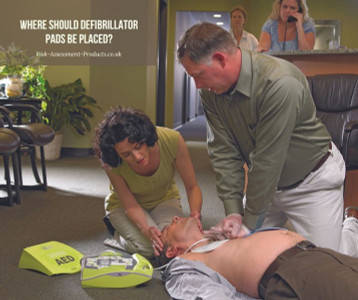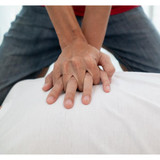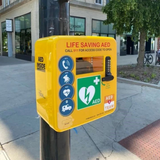Where should defibrillator pads be placed?
Defibrillators should be used when someone suffers a sudden cardiac arrest. These can occur to anyone, at any time regardless of age, gender or sex. It is really important to act as quickly as possible if someone is suffering a cardiac arrest as unfortunately, the chances of survival are very slim.
According to the British Heart Foundation, deaths from heart and circulatory diseases occur every one to three minutes. In 2020, 168,319 deaths occurred due to such causes. These range between anything from disease of the arteries to cardiomyopathy and arrhythmias (over 31,000).
To ensure more people survive a sudden cardiac arrest, the British Heart Foundation continually conduct research. They took a look at the number of resuscitation attempts compared to the survival to discharge. In the year 2020 to 2021, resuscitation attempts increased to 31,400 whilst the percentage of people discharged from hospital alive decreased to 8.1%. This shows how important it is to act as quickly as possible when someone near you suffers a sudden cardiac arrest. You can learn more about these statistics here.
How to spot if someone is having a cardiac arrest
You’ll soon be able to notice if someone you are with is suffering a cardiac arrest. Often confused with a heart attack but, very different, a cardiac arrest is caused by an electrical fault with the heart. This means the patient will fall unconscious, will stop breathing and will be unresponsive.
What do defibrillator pads do?
Defibrillators work by scanning the heart to determine whether a shock is needed and if so, will deliver one. This is to help it return to it’s natural pace so it can beat as normal once again. Although this sounds straightforward, a defibrillator is a very complex medical device which has the ability to store data, scan the heart and even shock it in order to save a life. Many years of research has been carried out in order to get the modern day defibrillator to the standard that it is at today. But, what do the electrode pads do?
When you open a defibrillator, one of the very first steps that you will be told to do, is to place the defibrillator pads on the patients chest. These pads are adhesive and they deliver electricity through the chest wall, to the heart muscle.
It is important to place the defibrillator pads in the correct place on the patients chest in order for it to deliver the shock correctly and so that as much electrical current can pass through the heart as possible.
The first defibrillator pad should be placed on the upper right side of the chest, below the collarbone with the second pad being placed on the left side below the armpit. This does however alert with children. The first pad goes on the centre of the chest and pad two should be placed in the centre of the child’s back. Paediatric pads lower the joule output from the defibrillator to protect the child’s heart. Paediatric pads are suitable for children aged one to eight.
You also need to remember that the patients chest needs to be bare and that you should remove any jewellery such as nipple piercings and necklaces. You don’t need to worry about whether the patient has a pacemaker fit or has tattoos, these won’t affect the performance of a defibrillator.
If you are with someone who is suffering a cardiac arrest it’s important to act fast. Call the emergency services, begin CPR and use a defibrillator.
Recent Posts
-
What is CPR?
Knowing the basics of first aid and how to deliver CPR (cardiopulmonary resuscitation) can make the …17th Nov 2024 -
What is a sudden cardiac arrest (SCA)?
Sudden Cardiac Arrest (SCA) is a critical medical emergency where the heart abruptly ceases to funct …17th Nov 2024 -
Empowering Communities: The Lifesaving Impact of CPR on Restart a Heart Day
Every year, on and around October 16th, an important event takes place - Restart a Heart Day. This a …16th Oct 2023




